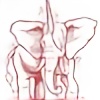HOME | DD
 CarpathianLion — Monkey-Ray - Species
CarpathianLion — Monkey-Ray - Species

Published: 2021-04-16 19:56:20 +0000 UTC; Views: 5237; Favourites: 120; Downloads: 0
Redirect to original
Description
Note: So... not my best work, I know. Besides college, art block decided to hit me. I couldn't be really picky with what I draw, since I was stagnating on all my other drawings. People seemed interested enough in a proper description for this species, so here it is:A co-species for the Pescan species. .
Origins:
Possessing a likeness to manta rays, the monkey-ray is a late descendants, part of the genus Mobala. Cold-blooded, cartilaginous marine fish, monkey-rays evolved in order to capitalise on the underwater forest biome. This biome can be found near hydro-thermal vents, in cavities of dormant underwater volcanoes. The larger caverns maintain a constant temperature and are flooded with minerals essential for chemosynthetic bacteria - the backbone of the biome's food chain. Interestingly enough, certain caverns lack water and amphibious plants and animals have started to evolve and adopt to this niche. It is even theorised that Pescan had ancestors that lived in such biomes, and used it as an intermediary point between abyssal and amphibious life. Evidence of this theory is slowly piling up, as more of these caverns are discovered and explored.
Monkey-ray modified their pectoral fins into arm-like appendages and their pelvic fin suffered major changes in order to become hind legs. These have given the monkey-ray an ape-like anatomy, or better said, a flying squirrel anatomy, as their arms are still attached through a membrane to the body. They are therefore capable of gliding underwater, as well as gliding between the "trees" in the underwater forests. Monkey-rays have kept the gill slits placed on their ventral surfaces and can only move on land for 45min-1hour.
Their general size is much smaller in comparison to their mighty ancestors, the average monkey-ray having a length of ~2 meters, and reaching 110 kilograms
Diet: While manta-rays mostly feed on plankton, monkey-rays have a more versatile diet. Their mouth slits has redevelop heavy, rounded teeth in meant for the molluscs (especially cavern snails) inside underwater caverns, but also the hard fruits of the cavern "trees". Their teeth develop slowly however, so baby monkey-rays start with plankton for their first few months of life. They are currently the top of the food chain of the underwater forests.
Behaviour: Monkey-rays are harmless and will usually flee if humans try to approach them. The bigger specimens, however, will not be so timid and will simply ignore the presence of humans, as their size brings them confidence. They seem to form small groups, not necessary based on mating habits. These characteristics point towards a convergent evolution of primate-like features.
Part of the AU:
--Art and design by me, aka CarpathianLion , Do not steal/repost--
Related content
Comments: 14

👍: 1 ⏩: 1

👍: 1 ⏩: 0

👍: 1 ⏩: 0

👍: 1 ⏩: 0

👍: 1 ⏩: 0

👍: 0 ⏩: 0

👍: 1 ⏩: 1

👍: 0 ⏩: 0

👍: 1 ⏩: 1

👍: 0 ⏩: 0

👍: 0 ⏩: 1

👍: 0 ⏩: 0

👍: 1 ⏩: 1

👍: 0 ⏩: 0

















